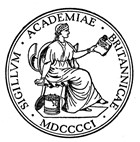Morpho-syntax of mutual intelligibility in the Turkic languages of Central Asia
Project Overview
Project
Morpho-syntax of mutual intelligibility in the Turkic languages of Central Asia
Project members:
Dr Nadezda Christopher
Period of award
October 2019 - March 2025
Funder:
The British Academy
Despite being perceived as unique, self-contained systems, the languages of the world exist within linguistic continua, and most linguistic varieties, to a higher or lower degree, are mutually intelligible with other related varieties. A high degree of mutual intelligibility (MI) is observed when speakers of different languages can efficiently communicate with each other using their native varieties. Languages in an MI relation have been reported for Scandinavian, Slavic, West German, Sinitic, Turkic, and many other language groups (van Bezooijen & Gooskens 2007; Chaoju & van Heuven 2009; Johanson 2012; Golubović & Gooskens 2015, among others). While the term ‘mutual intelligibility’ implies that the speakers of any two given languages understand each other equally well, MI is often asymmetric, such that speakers of language A understand language B better than speakers of language B understand A (Gooskens & van Bezooijen 2006).
While the relations between lexicon and MI, and sociolinguistic factors (i.e. level of language contact) and MI have already been well researched, morpho-syntactic factors affecting the degree of MI between related languages have not been investigated, bar a small-scale study of three Scandinavian languages by Hilton et al. (2013), which ultimately concluded that further typologically diverse research is necessary. Asymmetries in comprehension caused by morpho-syntactic variation are intriguing from a theoretical perspective, since they provide the opportunity to investigate what types of structural differences inhibit MI.
This project seeks to address this knowledge gap by answering the following over-arching research questions: (1) To what extent does morpho-syntactic micro-variation play a role in MI between closely related languages? (2) What types of morpho-syntactic differences between languages lead to asymmetries in MI? These questions will be answered by conducting novel experimental research on morpho-syntactic micro-variation between three Central Asian Turkic languages: Kazakh, Karakalpak and Uzbek.
Kazakh, Karakalpak, and Uzbek have been selected due to the fascinating linguistic and geo-political circumstances in which they currently exist. Kazakh and Uzbek are spoken in Kazakhstan and Uzbekistan respectively, and Karakalpak is spoken in the Republic of Karakalpakstan, located within Uzbekistan. Karakalpak is closely related to and ‘mutually intelligible’ with Kazakh, while at the same time it is related with, heavily influenced by, and ‘mutually intelligible’ with, Uzbek. The MI relation between Uzbek and Kazakh is not clear: some sources claim that they are mutually intelligible, while others state the contrary (Baskakov 1952; Khodzhiev 1997; Boeschoten 1998; Kirchner 1998).
The first goal of the project is to establish experimentally the type of comprehension asymmetries that exist between the three case-study languages; speakers of each language will undergo testing on the other two languages. The results of these preliminary experiments, corpus and grammar research, as well as elicitation work with native speakers of the three languages under consideration will lead to identification of phonological, lexical and morpho-syntactic differences between them, with a subsequent focus on morpho-syntactic micro-variation and MI.
To date, I have been able to identify several indicative differences between the languages that provide avenues for testing for MI asymmetries. For instance, the formation of the present continuous tense in Kazakh and Karakalpak differs from that in Uzbek: in the former languages, it is constructed via the combination of the converbial form of a lexical verb with one of the auxiliaries, while in Uzbek this is achieved via suffixation of a lexical verb. Variation is also observed in the syntax and morphology of indirect speech, and of other constructions. It is currently unknown to what extent these differences in morpho-syntax contribute to comprehension asymmetries between the three languages, and in which direction.
The second goal of the project is to develop specialised and original experiments which will allow us to establish the exact type of relation between morpho-syntactic micro-variations and MI. These tests will be controlled for phonological and lexical differences. By conducting these tests, I will be able to definitively identify the effects morpho-syntactic micro-variation have on comprehension, relative to the influence of phonological and lexical differences. Follow up interviews with the participants will help shed light on the tactics speakers use to overcome the morpho-syntactic barriers of MI.
This project constitutes an innovative and timely contribution to morphology and syntax, as the first large-scale experimental study of the relation between morpho-syntactic micro-variation and MI asymmetries. Additionally, it will provide the first theoretical and empiric examination of MI asymmetries in the Turkic languages of Central Asia, which will also contribute to the developing field of research on Central Asian Turkic languages.


